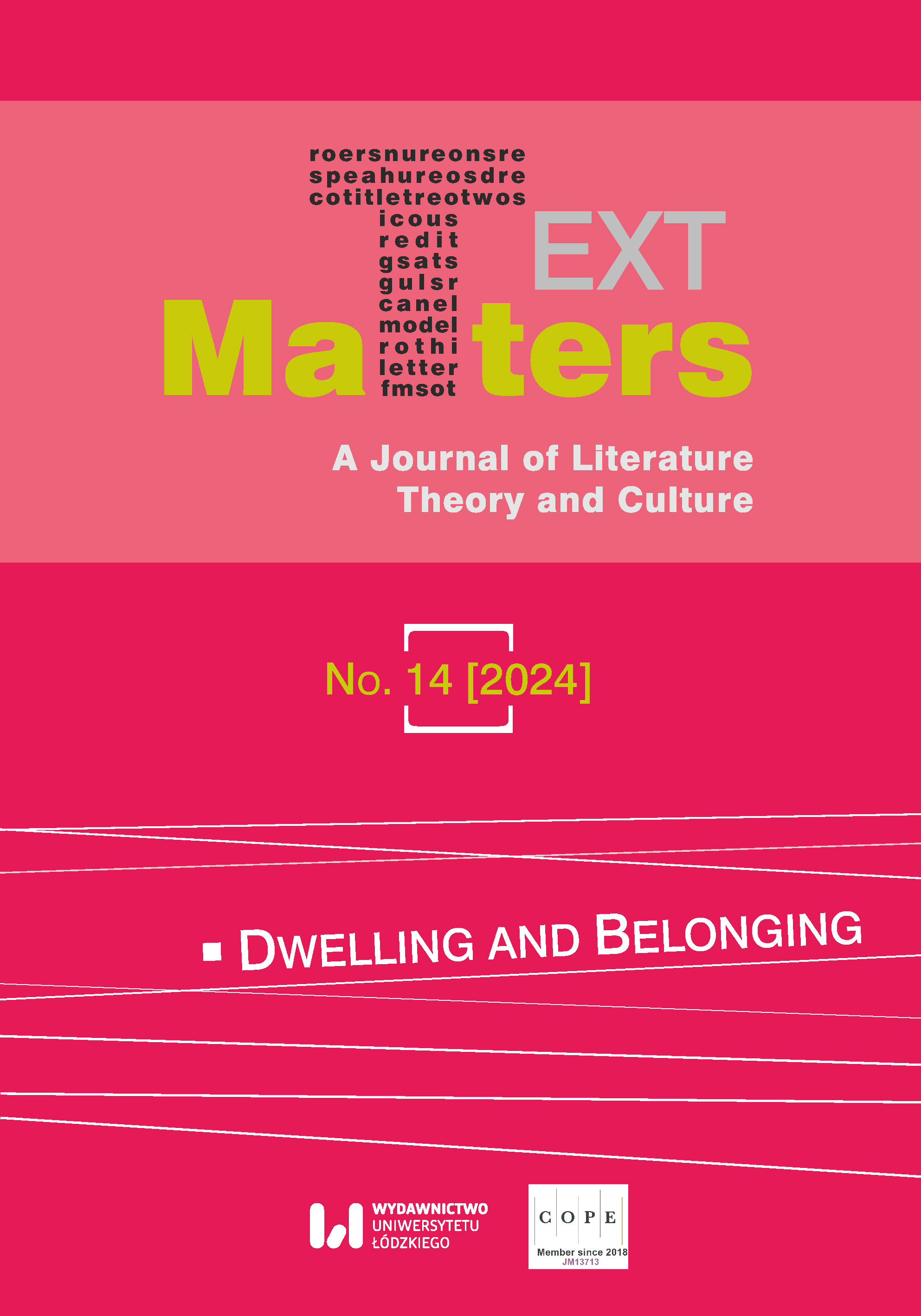Dwelling in the Urban Liminal: A Phenomenological Consideration of Saul Leiter’s Street Photography
DOI:
https://doi.org/10.18778/2083-2931.14.08Keywords:
liminal, Saul Leiter, Martin Heidegger, wohnen, dwelling and belonging, phenomenologyAbstract
In this essay, I present a phenomenological exploration of the “urban liminal” in the context of Saul Leiter’s street photography. In gauging the possibilities of dwelling in the urban liminal, this essay brings into dialogue Heidegger’s notion of “wohnen” (as delineated in “Building, Dwelling, Thinking”) and Leiter’s re-presentation of liminal places (and liminality). As transient spatialities, liminal places are not typically considered suitable for dwelling, meaning living or settling. But as neither space nor time is immutable and is always—whether evident or not—in a constant state of flux, it is useful to re-assess and re-imagine from time to time our relationship with place (and time) and, in the process, to reappraise the questions of identity and belongingness. In its investigation of the latencies of liminal places in Leiter’s street photography, this essay poses questions such as: is it possible to dwell (or be at home) in liminalities? How might the visual representation of liminality help deepen our understanding of transitional states and of change? How does Leiter’s stylization of liminality connect with our lived experience of these places? By examining Leiter’s depiction of urban liminality from a phenomenological perspective, this essay aims to show how liminality can be a useful concept for reimagining the relationship between the self and the world.
Downloads
References
Armstrong, Isobel. Victorian Glassworlds: Glass Culture and the Imagination 1830–1880. Oxford UP, 2008.
Google Scholar
Harvey, David. Social Justice and the City. Edward Arnold, 1979.
Google Scholar
Heidegger, Martin. Being and Time. Translated by John Macquarrie and Edward Robinson, Harper & Row, 1962.
Google Scholar
Heidegger, Martin. “Building, Dwelling, Thinking.” Poetry, Language, Thought, edited and translated by Albert Hofstadter, Harper & Row, 1971, pp. 145–61.
Google Scholar
Husserl, Edmund. Logical Investigations. Translated by J. N. Findlay, Routledge, 1970.
Google Scholar
In No Great Hurry: 13 Lessons in Life with Saul Leiter. Directed by Tomas Leach, Zeitgeist Films, 2013.
Google Scholar
Kappraff, Jay, Ljiljana Radović, and Slavik Jablan. “Meanders, Knots, Labyrinths and Mazes.” Journal of Knot Theory and Its Ramifications, vol. 25, no. 9, 2016, pp. 1–22. https://doi.org/10.1142/S0218216516410091
Google Scholar
DOI: https://doi.org/10.1142/S0218216516410091
Malpas, Jeff. Rethinking Dwelling: Heidegger, Place, Architecture. Bloomsbury, 2021. https://doi.org/10.5040/9781350172944
Google Scholar
DOI: https://doi.org/10.5040/9781350172944
Merleau-Ponty, Maurice. The Phenomenology of Perception. Routledge, 1962.
Google Scholar
Pallasmaa, Juhani. The Eyes of the Skin: Architecture and the Senses. John Wiley, 2005.
Google Scholar
“‘Saul Leiter, the New York Nabi’ on L’Oeil de la Photographie.” Saul Leiter Foundation, https://www.saulleiterfoundation.org/latest-news/loeil-de-la-photographie accessed 27 Sept. 2023.
Google Scholar
Turner, Victor. The Forest of Symbols: Aspects of Ndembu Rituals. Cornell UP, 1967.
Google Scholar
van Gennep, Arnold. Rites of Passage. Chicago UP, 1960.
Google Scholar
DOI: https://doi.org/10.7208/chicago/9780226027180.001.0001
Vermare, Pauline. “Saul Leiter: The New York Nabi.” Blind Magazine, 3 July 2023, https://www.blind-magazine.com/news/saul-leiter-the-new-york-nabi/ accessed 30 Jan. 2024.
Google Scholar
Wheelwright, Philip Ellis. The Burning Fountain: A Study in the Language of Symbolism. Indiana UP, 1968.
Google Scholar
Zukin, Sharon. Landscapes of Power: From Detroit to Disney World. U of California P, 1991. https://doi.org/10.1525/9780520913899
Google Scholar
DOI: https://doi.org/10.1525/9780520913899
Published
Versions
- 2024-11-28 (2)
- 2024-11-28 (1)
How to Cite
Issue
Section
License

This work is licensed under a Creative Commons Attribution-NonCommercial-NoDerivatives 4.0 International License.













